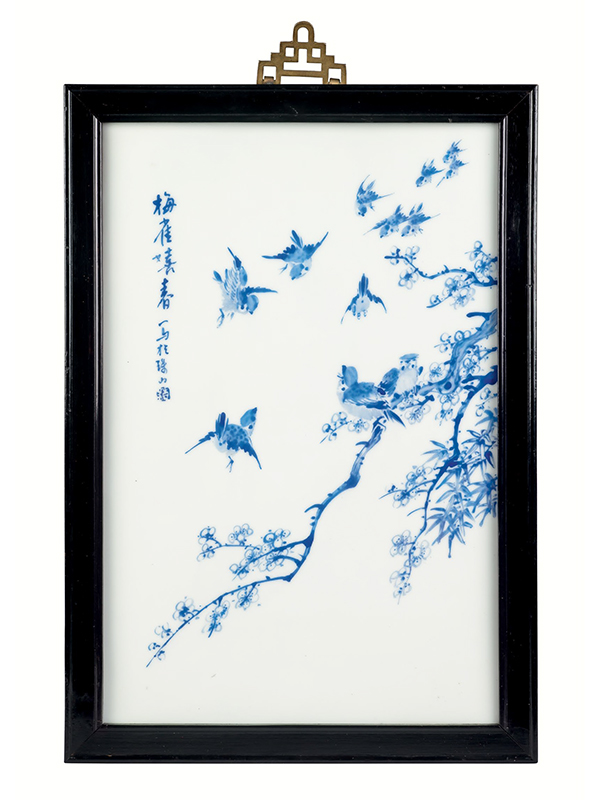Porcelain plaque with sparrows
People’s Republic of China, 20th century
A rectangular porcelain plaque, painted in underglaze blue with a cluster of sparrows, some sitting on branches of a flowering prunus, others flying about. On the right-hand side, some clusters of bamboo are visible. Two inscriptions are painted in the top left-hand corner, reading “mei que xi chun, xie yu zhu shan” (sparrows enjoying the coming spring, written at Zhushan).
From the mid Qing dynasty, the development of porcelain painting prospered in China. Artists were committed to transplant Chinese ink painting from paper to porcelain works, including porcelain plaques, screens, brush pots, or paperweights. During the late Qing dynasty and the Republic of China period, many porcelain painters were gathered in Jingdezhen, Jiangxi province. It was not until 1928 that the eight most famous porcelain painters formed the Yue Yuan Hui (The Club of Circular Moon), and later known to the collectors as the ‘Eight Friends of Zhushan’ (Zhushan is the same as Jingdezhen).1 Those eight porcelain artists, following the traditional painting style of the ‘Eight Eccentrics of Yangzhou (Yangzhou baguai)’ of the mid Qing dynasty, made porcelain painting become a mainstream of art. Three comparable porcelain plaques are illustrated in Pian Xie Shan Fang Cang Ci (Porcelain Collection in the Pian Xie Retreat).2
- These eight porcelain artists include Wang Qi, Wang Dafan, Wong Yeting, Zhen Bishan, Bi Botao, He Xuren, Chen Yiting, Liu Yuchen.
- Pian Xie Shan Fang Cang Ci (Porcelain Collection in the Pian Xie Retreat), Hangzhou, Xiling Yin She (Xiling Seal Engraver’s Society Publishing House), 2007, pp. 31, 111, 175

